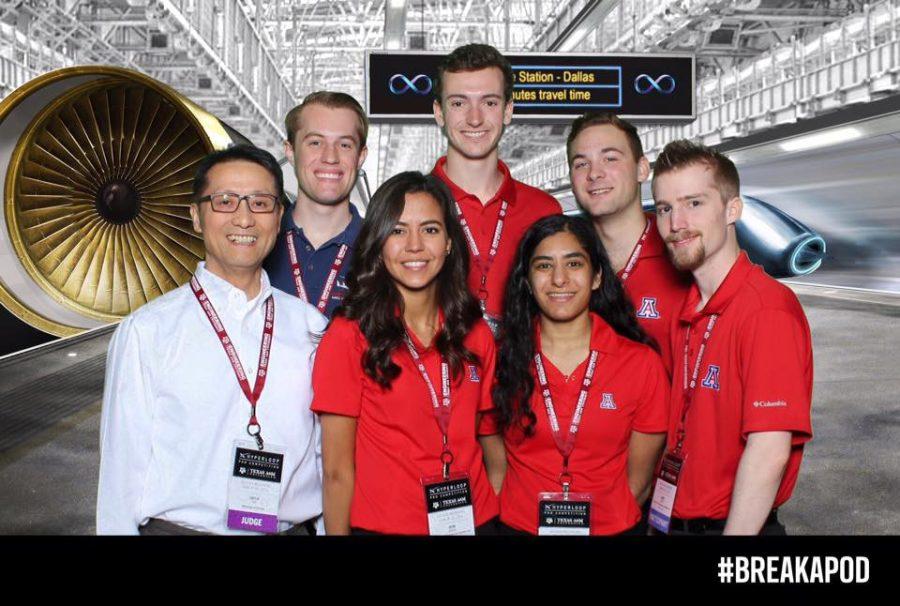A new mode of transportation capable of traveling 600 mph, just under the speed of sound, is trying to become the next mainstream form of travel.
Proposed as a “fifth mode of transportation” by Elon Musk, founder and CEO of SpaceX and Tesla Motors, the Hyperloop is a proposed train model that travels in a near-vacuum tube and rides on air bearings, much like a hockey table.
With this developing technology, the trip from San Francisco to Los Angeles, which would normally take about six hours via car, could potentially take no more than 35 minutes.
The UA is helping improve this technology through its own Hyperloop team founded last year by engineering juniors John Mangels, Namrah Habib, Irene Moreno, Corey Colbert and Jacob Pavek.
In addition to providing a quick and simple method of travel, the Hyperloop would also take advantage of solar energy, making it a competitive transportation model with a small environmental footprint in regard to efficiency and green energy.
The Hyperloop team recently competed against other schools at Texas A&M University in College Station, Texas.
The competition consisted of more than 100 university teams from around the world, three high schools and even a team organized through Reddit.
“There were a variety of ideas presented at the competition, although it did not feel like a competition at all,” Moreno said. “It felt more like a collaboration of students with one goal: develop the new and improved mode of transportation. Ideas were bounced back and forth [rather than] having teams keeping ideas to themselves for competition’s sake.”
After competing in Texas, the Hyperloop team received funding through the UA Engineering Student Council in an effort to expand the design for a test track and begin construction for a model in the upcoming week.
“This small-scale track will allow a 3-D-printed pod to ride on our air bearing design, while also having a fully functional compressor, breaking system and control system,” Mangels said. “The ultimate goal of the test track is to further observe how the air bearings perform at speed while in a low-pressure environment.”
Future plans for the Hyperloop team include constructing a larger, low-pressure environment to perform a wider range of tests on the air bearing and compressor systems.
The Hyperloop team is always looking for new members, regardless of year, major and level of experience. There are plenty of opportunities available ranging from aerodynamics to social media management.
The Hyperloop team can be contacted through email at irenepmoreno@email.arizona.edu, johnmangels@email.arizona.edu and nshahid@email.arizona.edu.
Follow Arturo Bradic on Twitter.









